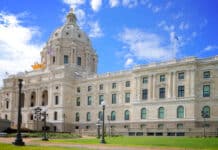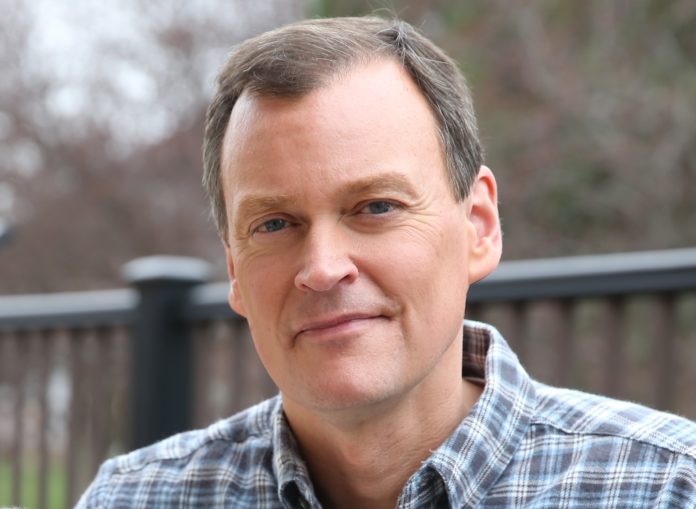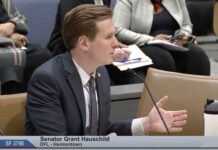As it is for many Minnesotans, the debate about violence, guns and school safety in our society is very personal for me. We have two sons in school – one at a large university and one at a large high school – the sorts of places we see horrific shootings like that in Parkland, Florida earlier this year.
Figuring out how to keep our kids (and every Minnesotan) safe from unstable or evil people with weapons is very important to me, and as governor, I will do everything in my power to address this problem, but I’ll do it with a level head and common sense and not be guided by fear or anger.
Sadly, most of the debate we hear after tragic shootings like Parkland are largely devoid of that level-headed analysis.
I understand that gun violence is a very difficult and emotional issue, but every time we have a national tragedy that involves a firearm, it leads to an immediate “national conversation” about restricting 2nd Amendment rights. (And, by the way, it’s never actually a “conversation” since anyone disagreeing with the prevailing orthodoxy is labeled indifferent to the killing of children or a tool of the NRA – but that’s a different topic).
What always follows these tragedies is a movement based on the principle that the 2nd Amendment is the problem and gun restrictions on law-abiding citizens are the solution.
I strongly disagree.
When government is attempting to address a problem – especially a problem that will affect the Constitutional rights of Americans – we should be solely focused on government actions that will actually address that problem, not on measures that make politicians feel good or look good.
This is why I oppose new gun restrictions to address mass shootings – they will not solve (or even diminish) the problem.
The proposals I’ve seen to address the Parkland shooting (spanning the gamut from higher age restrictions on gun purchases to actually repealing the 2nd Amendment) ignore the fact that we already have many gun restrictions and requirements in place at both the state and national level and government is doing a pretty poor job of enforcing them.
For example, prior to the Parkland shooting, the local police, sheriff’s office, FBI and school officials all received warning sign after warning sign about the shooter and either ignored or dismissed those signs. Police were called to the shooter’s home nearly 40 times based on his violent or threatening behavior, his fellow classmates said they warned school officials repeatedly of their concerns and he even posted on YouTube that he intended to become a “professional school shooter”, gaining the attention of the FBI. Nothing was done.
The real problem with this issue and the “national conversation” forwarded on cable news, in marches and in political campaigns is that the 2nd Amendment question dominates while the real causes mostly go undiscussed.
Those real causes are complicated and disturbing – which is why so many people are unwilling to talk about them and prefer to focus on simpler “solutions” like gun control – but we have to start talking about what is happening to some of the young men (and boys) in America.
When I was in high school in the ‘80s, there were many kids who kept hunting rifles in their vehicles on school property and even brought them into school under supervision. Guns were much more prevalent then and gun restrictions were considerably fewer than they are now, but no one ever was concerned about a mass shooting.
That all changed in the ‘90s, and today, while still rare, mass shootings have become a terrible part of life. And they are almost all perpetrated by troubled boys or young men.
So what happened?
There are many culprits that we’re largely ignoring:
Our kids are growing up in a time where pop culture is drenched in violence. Whether it’s music, video games, TV or movies, there is a certain mystique awarded to violence and guns.
Our families are more broken than ever in America, and most of the young men committing these atrocities come from broken homes.
We’re making some progress, but we still do a poor job of identifying and treating mental illness, especially among kids and young adults.
And, in some school districts, we now have a policy of excusing disruptive and even violent behavior from students based on the concern that discipline might disproportionately affect certain groups of kids.
Some of these problems are cultural and government’s role in addressing them is limited, but there are things state government can do regarding mental health assessment and treatment, school policy regarding violent students and encouraging families to stay intact.
And, of course, there are actions we can take to keep our schools safer, such as enhanced physical security, broader use of safe schools funding, proactive threat assessment programs and allowing trained and certified individuals to carry weapons within our schools.
As Governor, any legislative action I take will always be directly aimed at solving a problem, not making politicians feel good. Consequently, I will not sign any new gun restrictions as your Governor but WILL work tirelessly to address violence in Minnesota, keep our kids safe and enforce the laws we already have on the books.


















